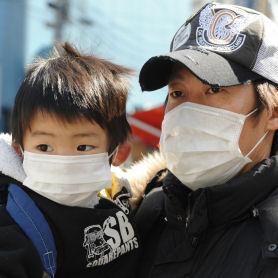Japan crisis: nuclear compensation plan agreed
The operator of Japan’s tsunami-hit Fukushima nuclear plant have agreed to a major restructuring plan in return for government help in paying compensation to tens of thousands of people.
Tokyo Electric Power Company (TEPCO), which operates the Fukushima Daiichi plant, said it has agreed to drastic restructuring, cost-cutting and other conditions, exactly two months after the devastating earthquake and tsunami that killed at least 25,000 people and displaced over 100,000 more.
TEPCO also promised to allow a government-appointed panel to evaluate its financial status and progress in providing compensation.
In return, the Japanese government will inject over 37 billion pounds into a fund that can be accessed by Tepco if it runs into financial difficulty.
The money would have to be repaid but would allow TEPCO to spread its burden over several years.
The plan is the result of weeks of negotiations among government officials, bankers and Tokyo Electric executives over who should foot the bill for the crisis.
Read more: Japan's nuclear crisis special report
The energy company has already asked for a two trillion yen (£15bn) loan for the initial emergency period.

It also expects to pay out 50 billion yen (£377.5m) in initial compensation to nearly 80,000 residents evacuated from around the plant.
TEPCO can also receive up to 120 billion yen (£0.9bn) in insurance from the government under an existing nuclear accident compensation law.
Major losses
Tokyo Electric is thought to have made a net loss of more than 1 trillion yen in the year that ended on March 31, the biggest ever for a non-financial Japanese firm, after booking costs to scrap four damaged nuclear reactors and writing off tax assets.
The scheme is not designed to rescue TEPCO, but to save the people affected by the nuclear accident, Banri Kaida, Japan’s Economy Minister
The company has been criticised for its handling of the crisis, and is still detecting small leaks of radioactive water into the sea.
Economy and trade minister Banri Kaieda denied the scheme is designed to relieve the utility’s burden.
“The scheme is not designed to rescue TEPCO, but to save the people affected by the nuclear accident,” Kaieda told a news conference.
“There are a large number of people who are entitled to receive compensation.”
Evacuation
The compensation plan came as the first evacuees, from the village of Kawauchi, returned briefly to the no-go zone to take belongings and tend their cattle, while wearing full protective gear.
Outside of the nuclear-hit zone, many people are yet to receive aid as the country struggles to rebuild its financial and administrative functions.
The Japanese Red Cross Society has so far collected 174bn yen (£1.34bn) in relief money, the most it has ever been given for any relief campaign. The charity distributed about 65bn yen in April to regional governments in the disaster-hit area, but says that this fund has yet to reach those most in need.
“The biggest problem is that those who should be receiving the money cannot be identified, as more than 10,000 people are still missing, resident registrations are gone and the administrative functions at the periphery are not working,” said Tadateru Konoe, president of the Japanese Red Cross.
The total cost of the damage has been estimated at almost £200bn, making it the world’s most costly natural disaster.
-
Latest news
-
Local elections taking place ‘during time of intense public dissatisfaction’, says Ipsos polling expert6m

-
Is Ben Houchen’s win in Tees Valley a lifeline for Rishi Sunak?5m

-
Is Reform UK helping Labour into power?5m

-
Leading surgeon from Al-Shifa hospital dies in Israeli custody3m

-
Is Labour’s stance on Gaza behind the party’s failure to win any council seats in Pendle?2m

-




